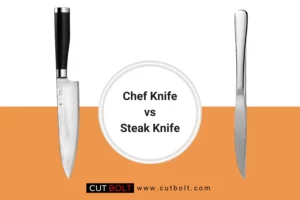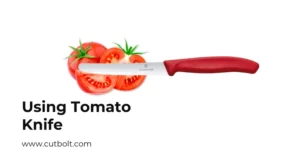Cutlery language in restaurant: Like everything in this life, the way to place your cutlery in a restaurant or event, or banquet hall has a meaning that many are unaware of.
There are some classic protocol rules, which indicate the proper way to place your cutlery during a lunch or dinner and its development. Cutlery has its own language and use.
Depending on how we leave them on the plate, we will be giving certain information to the waiters and also to the restaurant itself.
With our cutlery, we can inform and give our opinion about food, our state or intentions with respect to it without speaking. In this way, we will facilitate the restaurant staff’s work. Do you want to know those basic protocol rules at the table? At Cut Bolt, we make it easy for you! When you finish this article you will already know what the position of the table cutlery means.
However, cutlery language is not only a code about the rules of protocol and behavior. It is also very interesting and helpful when it comes to socializing since at some point you may have to attend a social event where the protocol is more widespread and you need to use it.
It is true that not everyone knows this language of cutlery, much less puts it into practice, but it never hurts to know the proper use of cutlery. You will avoid more than one misunderstanding!
Protocol at the table
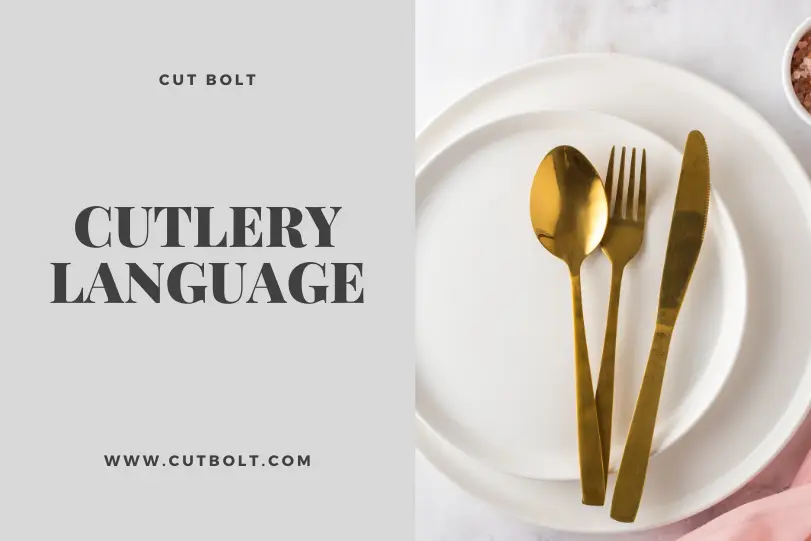
Hasn’t that happened to you of waiting for a long time for your plate to be taken away? Perhaps the waiter was still seeing food on it and was waiting for some kind of signal from you to clear your plate and serve you the next one. At this moment it could have helped you to know this language of cutlery.
Start position of your cutlery.
As soon as we sit down, we will find our cutlery in a certain position: the knife is always to the right of the plate with the edge inward. The spoon is placed next to the knife, to the right of it, and with the concavity facing up.
On the other side of the plate, the fork or forks are placed, depending on the type of formality of the establishment and the type of service that is going to be provided. All of them must go with the tips up.
On the other hand, all cutlery is placed at a distance of 4cm from the plate. Finally, the dessert cutlery is placed just above the plate, at the same distance, or is placed when the time comes.
Throughout the meal, we will use the cutlery and the way to position ourselves to communicate, non-verbally, if we have finished, if we want the next dish, if we do not like it, etc. is as follows:
“Pause” – Cutlery language in restaurant
If you want to say “Wait, I’m not done yet, it’s just a break, but I’ll keep eating”, you just have to place the cutlery on top of the plate at a 90-degree angle or a triangle.
“Next Course” – Cutlery language in restaurant
When you want to say “You can remove the plate. I’m ready for the next one”, what you should do is place the cutlery forming a cross.
“Excellent” – Cutlery language in restaurant
If you want to convey “I really liked the food”, the ideal is to place the cutlery in parallel, and always the handle facing to the left.
“I’m done” – Cutlery language in restaurant
“I’ve finished eating”. When you have finished eating and the food has not seemed fabulous but not bad either, you can indicate this by placing the cutlery perpendicular to the edge of the table, with the handles at the bottom of the plate. You will simply be saying that you have finished eating, but you will not be conveying any opinion or assessment of the quality of the dishes.
“I didn’t like it” – Cutlery’s language in the restaurant
“I didn’t like it.” If you want to indicate that you didn’t like it, you should place the cutlery at a 90-degree angle leaving the tip of the knife inside the tines of the fork.
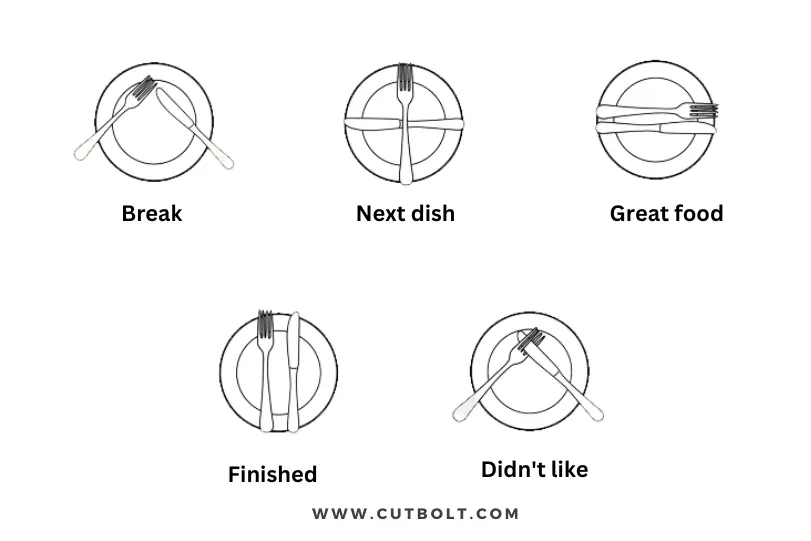
Other aspects to take into account with the use of cutlery
The order of use of the cutlery, especially for those occasions in which we find ourselves with several forks, knives and spoons, is from the outside in. In addition, it is important to try not to use the same cutlery throughout the meal. If not, we would spoil the flavors of each dish and not enjoy them properly. That is why there are specific cutlery for meat and fish.
Cutlery is an essential part of any table, so it is worth knowing a little about the origin of the cutlery and how it has become essential in our day to day.
What is the origin of the cutlery?
As you already know, there are a lot of items that we have been using on a practically daily basis for years but we have never stopped to think about where they come from.
We were born and they were already there, it is logical and normal that they are part of our lives. But if we do a little research, we discover that there are fantastic stories behind products as common and simple as tableware. In fact, and to begin with, where does your name come from?
According to some research, during the Middle Ages it was said that it was ‘eaten under cover’, referring to the tablecloth that was placed on the table to make diners see that they had covered themselves as a measure to prevent poisoning.
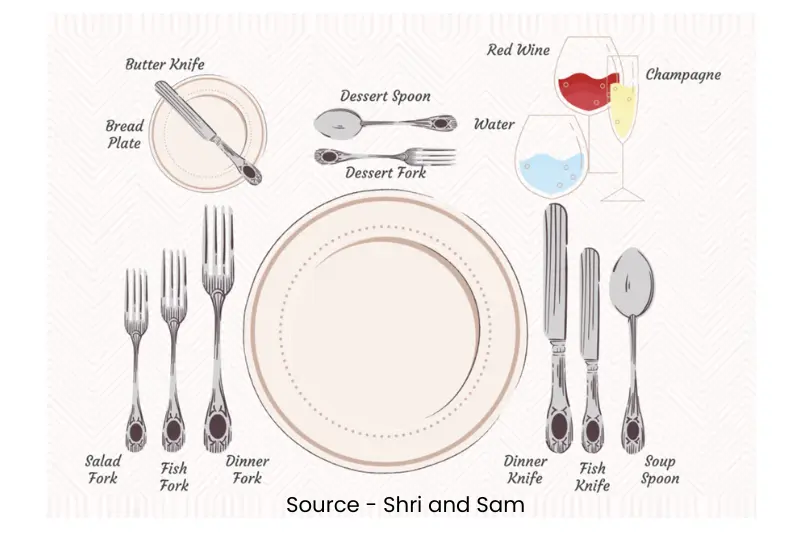
Origin of Knife
It is one of the first utensils created by man. In fact, it is known that the first ones were made of stone and even bones, until metallurgy arrived and they could start to make them with different metals.
It arose due to the need that human beings have always had to make cuts, either as a defense method or as a tool to cut food.
Until well into the 19th century, the knife was an indispensable item in anyone’s pocket, as it was used to cut bread, fruit, meat, and also to open the mail.
The knife is a recognized cutting element since the beginning of time. It was created to meet needs and has evolved until today when we find a wide variety of kitchen knives made of different materials.
Cities like Solingen in Germany specialized in knives and are now a world reference in their manufacture. Currently, other knives that enjoy enormous recognition are Japanese knives., known for their enormous quality and the precision of their cut.
Origin of Spoon
For starters, the term spoon comes from the Latin ‘cochleare’. It is considered one of the first utensils that were made both for eating and serving, although it is true that originally they had very different shapes and not always with as much concavity as we understand them today. According to experts, it is considered that, since the Paleolithic, men already used spoon-shaped utensils to take food.
Spoons, as we now know them, seem to have begun to prevail in the 3rd century BC among the upper classes of the Hellenistic cities within the domestic sphere.
However, little by little the spoons were spreading to other social classes. According to history, the earliest known designs for the spoon were carved from bone and stone. Later, the most used material was wood, although gold and silver were also used to make cutlery for the higher social classes.
The spoon evolved and today we find spoons of different sizes that adapt to our needs.
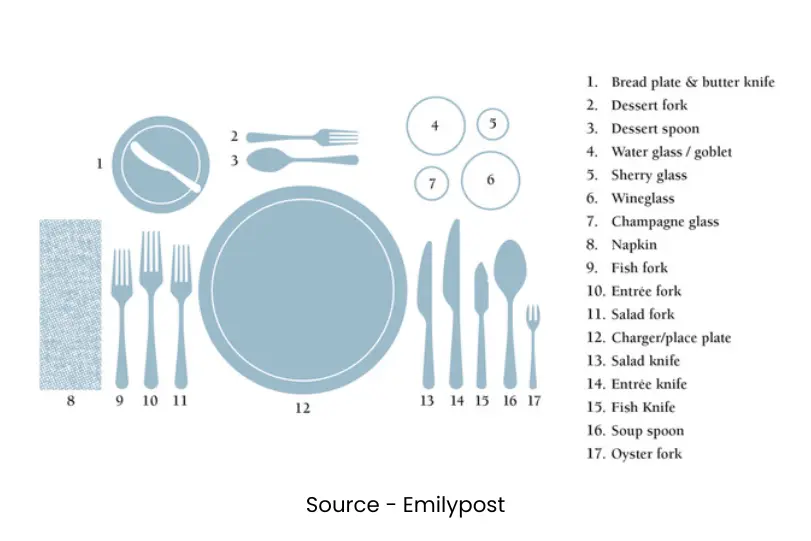
Origin of Fork
And we left the fork for last since it was the cutlery utensil that took the longest to appear. According to the story, the fork came to Europe at the beginning of the 11th century from Constantinople by Theodora, the daughter of Byzantium Emperor Constantine Ducas, who brought it to Venice after marrying the Doge’s son. The truth is that their introduction into the customs of the court was not easy, since their ways were branded as scandalous and reprehensible.
It is said that this rejection of the fork as a table utensil is due more to a lack of skill on the part of the diners than to a possible lack of usefulness.
It is assumed that the use of the fork became widespread from the late 18th century or early 19th century, since it varies depending on each country. Little by little it spread to the rest of the world, although it is true that in many cultures forks have no place in the kitchen. For example, in Chinese culture, the use of chopsticks is preferred and in others even eating with the hands is preferred.
We hope this article has shed some light and helped you communicate messages to waiters through cutlery.
Check your kitchen knife’s hardness and its meaning here.

